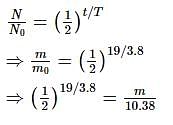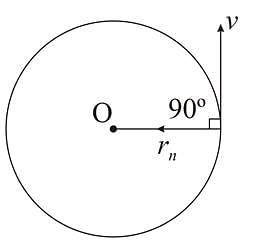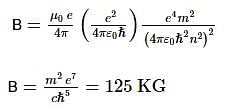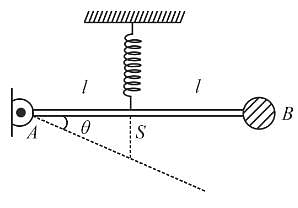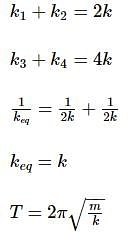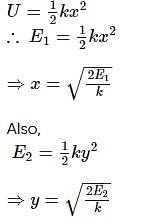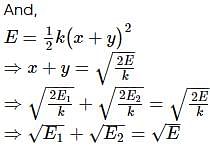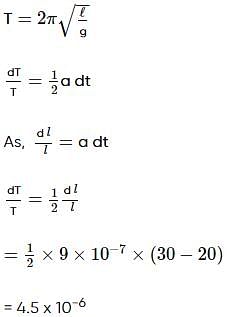BITSAT Physics Test - 6 - JEE MCQ
30 Questions MCQ Test - BITSAT Physics Test - 6
Which among the following arrangements can be used to verify Ohm's law? It is given that Rs is shunt resistance, RL is a high resistive wire and RT is a test resistance wire.
Find the angle between the magnetic field and the direction of current. if a wire of 1.5 m length and carrying current of 5 ampere, when it is placed in a uniform magnetic field of 2 Tesla a force of 7.5 newton act on it.
| 1 Crore+ students have signed up on EduRev. Have you? Download the App |
To increase the sensitivity of a moving coil galvanometer, the correct treatments are:
I. Place magnetic core in the coil
II. Increase the number of turns
III. Decrease the area of the coil
I. Place magnetic core in the coil
II. Increase the number of turns
III. Decrease the area of the coil
In a Young's double slit experiment, the light used has two wavelengths of 300 nm and 540 nm. A pattern of dark and bright fringes is obtained due to the lights of the two wavelengths. If the distance between the slits and the distance between the first two consecutive completely dark fringes respectively are 0.5 mm and 15 mm, what is the distance between the plane of slits and the plane of the screen?
The wavelength of radiation emitted is λ0 when an electron jumps from the third to the second orbit of a hydrogen atom. For the electron jump from the fourth to the second orbit of the hydrogen atom, find the wavelength of the emitted radiation.
In the given circuit, the current in arms BC and EF respectively are
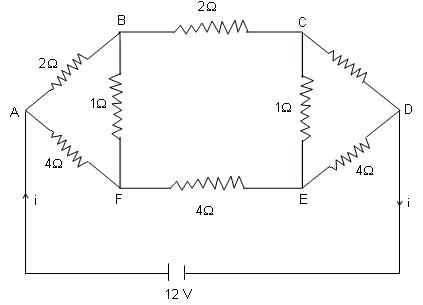
A circular wire is connected to a battery of V volts via two diametrically opposite points P and Q as shown in the figure. The magnetic field strength at the centre of the loop will be
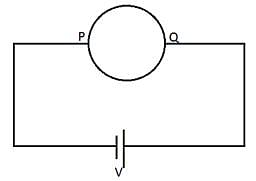
Two coaxial loops of radii 50 cm and 150 cm are placed such that the distance between their centre is 100 cm. What will be the value of the flux linked with the loop of 50 cm radius, when an electric current of 4 A flows in the loop of 150 cm radius?
A convex lens and a concave mirror of same focal length are place 1 metre apart from each other. An object is placed at a distance of 20 cm from the concave mirror. If the focal length of the convex lens is 15 cm, by how many times will the image of the object be magnified?
From the given figure, find the value of resistor R for maximum current, when a diode is used in the circuit has a constant voltage drop of 0.6 V and a maximum power rating of 120 mW. Resistor R is connected in series with the diode.
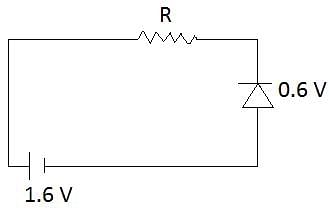
Mass of neutron is Mn = 1.008665 amu and mass of proton mp = 1.007825 amu. The minimum energy of an antineutrino to produce the reaction  , is approximately
, is approximately
A sample of an element is 10.38 g. If half-life of element is 3.8 days, then after 19 days, how much quantity of element remains?
A photon of energy 8 eV is incident on metal surface of threshold frequency 1.6 × 1015 Hz. The kinetic energy of the photoelectrons emitted (in eV) (take h = 6 × 10−34 Js)
The anode voltage of a photocell is kept fixed. The wavelength λ of the light falling on the cathode is gradually changed. The plate current I of the photocell varies as follows :
The nuclear fusion reaction is given 1H2 + 1H2 → 2He3 + 0n1 +Q (energy). If 2 mole of deuterium are fused the total released energy is
In which of the following decays the element does not change?
Calculate the magnetic field induction at the centre of a hydrogen atom caused by an electron moving along the first Bohr orbit.
A uniform thin rod has a mass 1 kg and carries a mass 2.5 kg at B . The rod is hinged at A and is maintained in the horizontal position by a spring having a spring constant 18 kN m−1 at C as shown in figure. The angular frequency of oscillation is nearly -
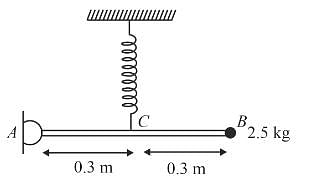
A hollow sphere is filled with water through the small hole in it. It is then hung by a long thread and made to oscillate. As the water slowly flow out of the hole at the bottom, the period of oscillation will
A body of mass m is situated in a potential field U(x) = U0(1 – cos αx) where, U0 and α constants. Find the time period of small oscillations.
A simple pendulum has a time period T1 when on the earth's surface and T2 when taken to a height 2R above the earth's surface where R is the radius of the earth. The value of (T1/T2) is
As shown in figure a simple harmonic motion oscillator having identical four springs has time period
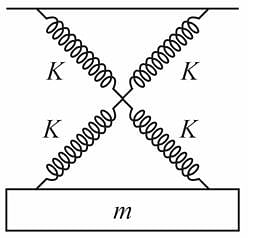
A body is executing simple harmonic motion. At a displacement x, its potential energy is E1, and at a displacement y its potential energy is E2. The potential energy E at displacement (x+y) is
A clock pendulum made of invar has a period of 0.5 s, at 20°C. If the clock is used in a climate where the temperature averages to 30°C, how much time does the clock lose in each oscillation?
(For invar, a = 9 x 10-7 /°C, g = constant)
What will be the force constant of the spring system shown in figure?
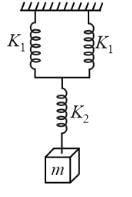
A simple pendulum hanging from the ceiling of a stationary lift has time period t,. When the lift moves downward with constant velocity, the time period is t2, then :
Two masses m1 & m2 are suspended together by a massless spring of spring constant k (Fig.). When the masses are in equilibrium, m1 is removed without disturbing the system. Find the amplitude of oscillation of m2
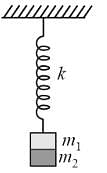


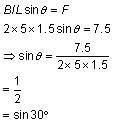







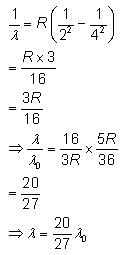
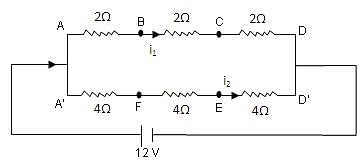





 where R is the radius of the bigger loop.
where R is the radius of the bigger loop.






